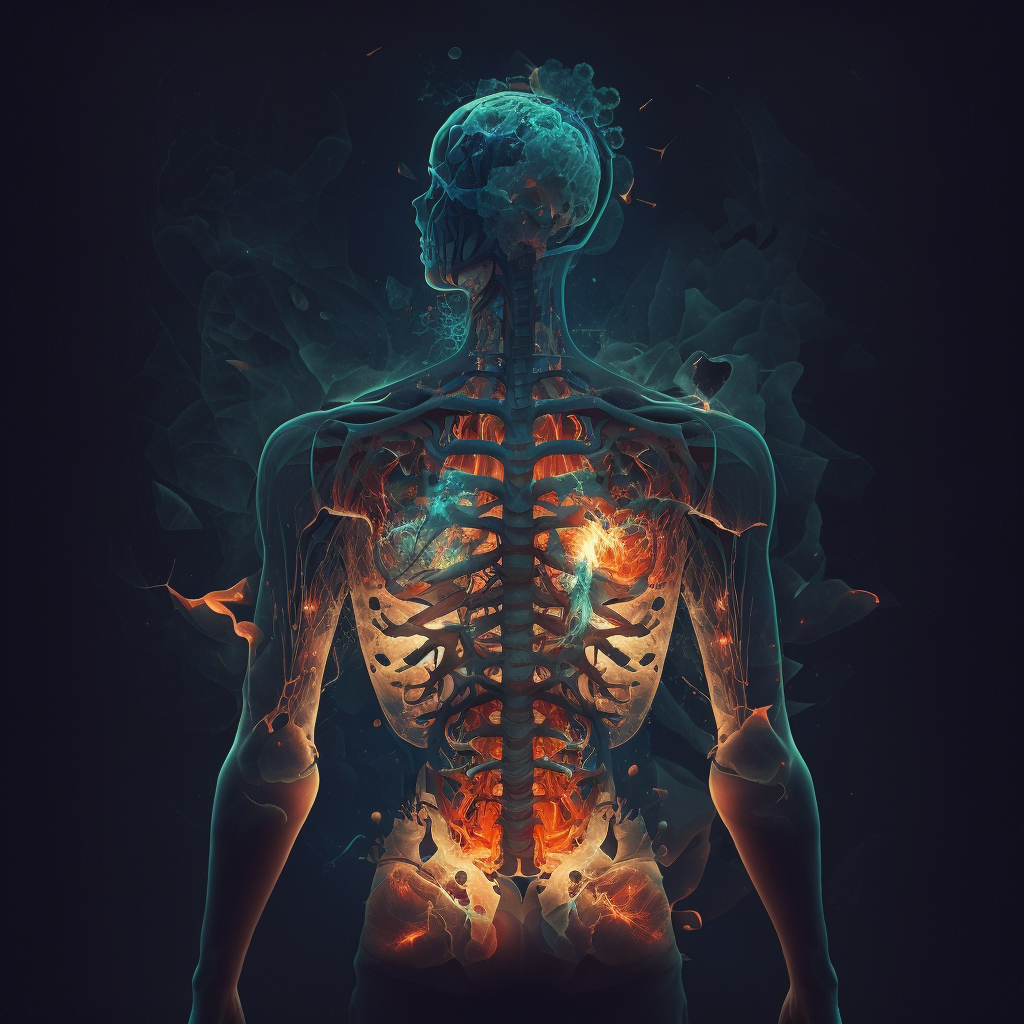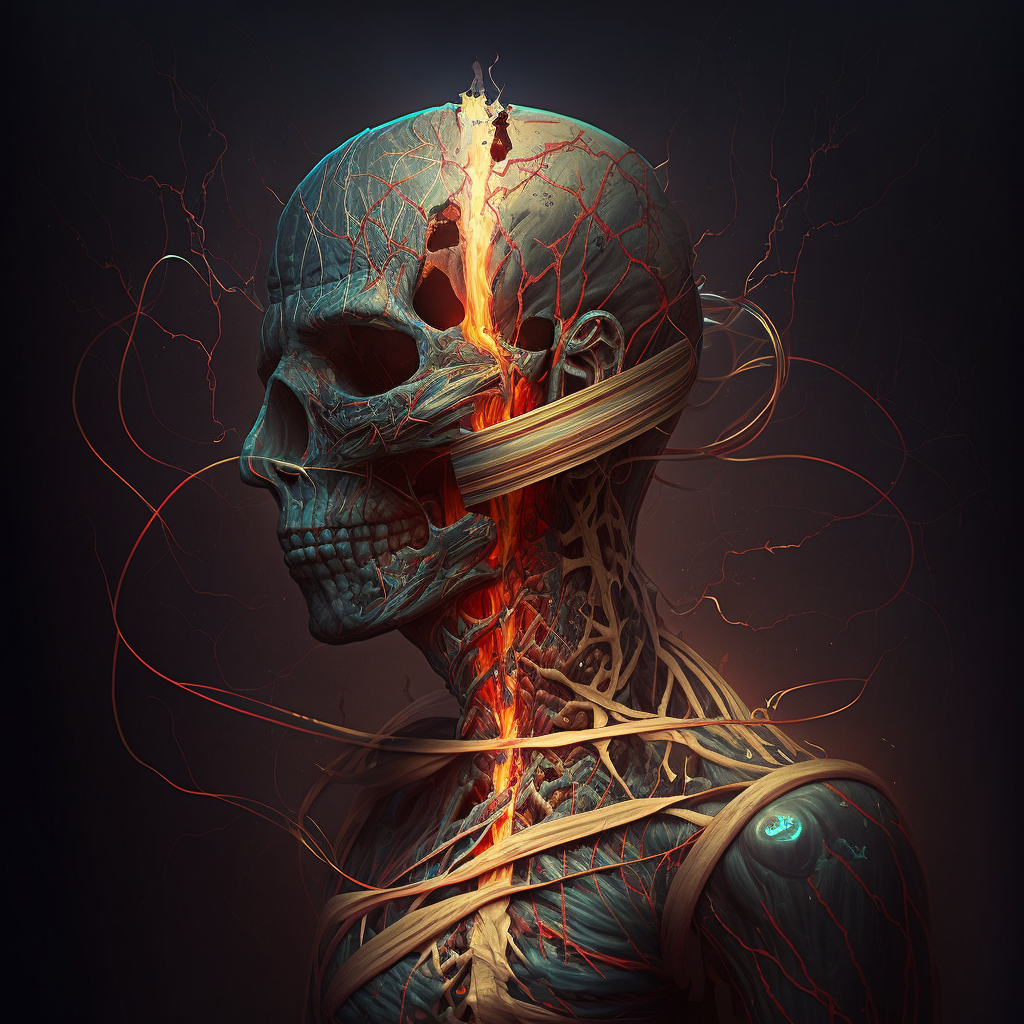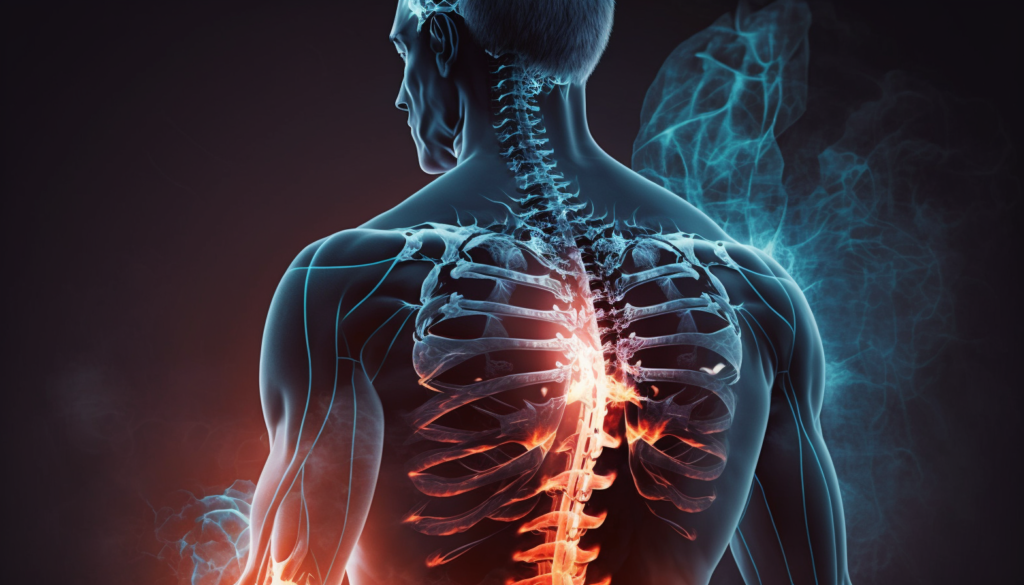Explanation of chronic pain.
Chronic pain is defined as pain that lasts for more than three to six months and persists beyond the expected time of healing. It can be caused by a variety of medical conditions, physical and emotional factors, or it can be idiopathic (without a known cause). Chronic pain can have a significant impact on a person’s physical and mental health, affecting their ability to perform daily activities, work, and socialize. Effective management of chronic pain often involves a multidisciplinary approach, which may include medical treatments, non-medical treatments, lifestyle changes, and coping strategies.
Importance of understanding and managing chronic pain.
Understanding and managing chronic pain is important for several reasons.
Firstly, chronic pain can have a significant impact on a person’s quality of life, affecting their ability to perform daily activities, work, and socialize. Effective pain management can help reduce the impact of pain on a person’s life, improving their overall well-being.
Secondly, chronic pain can lead to other health issues, such as depression, anxiety, and sleep disturbances. Managing chronic pain can help reduce the risk of these related health issues.
Thirdly, chronic pain is a major public health concern, affecting millions of people worldwide. Understanding and managing chronic pain can help reduce the burden on the healthcare system and improve the quality of life for those living with chronic pain.
Overall, understanding and managing chronic pain is crucial for improving the health and well-being of individuals living with chronic pain and reducing the societal and economic burden of chronic pain.
Medical conditions that can cause chronic pain.

There are many medical conditions that can cause chronic pain. Some common examples include:
- Arthritis
- Fibromyalgia
- Chronic headaches or migraines
- Neuropathic pain
- Chronic back pain
- Cancer
- Multiple sclerosis
- Endometriosis
- Irritable bowel syndrome (IBS)
- Chronic pelvic pain
These medical conditions can cause pain that persists for months or even years and can have a significant impact on a person’s quality of life. It is important to seek medical advice and treatment if you are experiencing chronic pain to identify the underlying cause and determine the most appropriate treatment plan.
Physical and emotional factors that can contribute to chronic pain.
Physical and emotional factors can contribute to chronic pain in a variety of ways. Here are some examples:
- Physical factors:
- Poor posture or body mechanics
- Overuse or repetitive strain injuries
- Inflammation or nerve damage
- Obesity or being overweight
- Inactivity or lack of exercise
- Trauma or injury to the body
- Emotional factors:
- Stress, anxiety, or depression
- History of physical or emotional abuse
- Negative thinking patterns or beliefs about pain
- Lack of social support or isolation
- Catastrophizing or overly focusing on pain
- Poor sleep or sleep disorders
While physical and emotional factors may not directly cause chronic pain, they can exacerbate or contribute to pain that is already present. Managing these factors as part of a comprehensive treatment plan can help reduce the impact of chronic pain on a person’s life.
Types of chronic pain.
There are several types of chronic pain, including:

- Neuropathic pain: This type of pain results from damage or dysfunction in the nervous system, which can cause a range of sensations such as burning, tingling, or shooting pain. Examples of conditions that can cause neuropathic pain include diabetic neuropathy, postherpetic neuralgia, and phantom limb pain.
- Nociceptive pain: This type of pain is caused by damage or inflammation in the tissues, such as muscles, joints, or bones. Examples of conditions that can cause nociceptive pain include osteoarthritis, rheumatoid arthritis, and chronic back pain.
- Central pain: This type of pain results from damage or dysfunction in the central nervous system, which can cause a range of sensations such as burning, aching, or shooting pain. Examples of conditions that can cause central pain include multiple sclerosis, Parkinson’s disease, and stroke.
- Psychogenic pain: This type of pain has a psychological origin and can result from a range of emotional factors, such as anxiety, depression, or trauma. Examples of conditions that can cause psychogenic pain include somatoform disorders and conversion disorders.
- Idiopathic pain: This type of pain has no known cause or origin and can be difficult to treat. Examples of conditions that can cause idiopathic pain include fibromyalgia and chronic fatigue syndrome.
Effective management of chronic pain often involves identifying the underlying type of pain and developing a treatment plan that is tailored to the individual’s needs.
Neuropathic pain vs nociceptive pain.
Neuropathic pain and nociceptive pain are two different types of chronic pain with distinct causes and characteristics.
Nociceptive pain is caused by damage or inflammation to tissues, such as muscles, joints, or bones. This pain is usually described as a throbbing, aching, or sharp pain that is localized to a specific area of the body. Nociceptive pain is often treated with medication and physical therapy, and the underlying condition causing the pain is addressed.
Neuropathic pain, on the other hand, is caused by damage or dysfunction in the nervous system. This pain is often described as a burning, tingling, or shooting pain, and can be more widespread than nociceptive pain. Neuropathic pain is often chronic and difficult to treat, and can be caused by conditions such as diabetic neuropathy, postherpetic neuralgia, or phantom limb pain. Neuropathic pain is typically treated with medication, such as antidepressants or anticonvulsants, and sometimes with nerve blocks or other procedures to interrupt pain signals.
Both types of pain can be debilitating and have a significant impact on a person’s quality of life, and effective management often involves a multidisciplinary approach that addresses the underlying cause and provides tailored treatment options.
Impact of chronic pain on physical and mental health.
Chronic pain can have a significant impact on both physical and mental health, including:

- Physical health:
- Reduced mobility and ability to perform daily activities
- Fatigue and sleep disturbances
- Increased risk of other health conditions, such as depression, anxiety, and obesity
- Decreased immune function and increased inflammation
- Changes in appetite and weight
- Mental health:
- Increased risk of depression and anxiety
- Decreased quality of life and overall well-being
- Social isolation and decreased social support
- Negative impact on self-esteem and self-image
- Higher rates of substance abuse and addiction
Chronic pain can lead to a cycle of physical and mental health problems, as the pain can make it more difficult to perform daily activities, sleep, and engage in social and recreational activities, which can in turn contribute to mental health problems such as depression and anxiety. Effective management of chronic pain involves addressing both the physical and emotional impact of pain, and may involve a multidisciplinary approach that includes medication, physical therapy, and psychological interventions such as cognitive-behavioral therapy.
Medical treatments for chronic pain.
There are several medical treatments available for chronic pain, depending on the underlying cause and type of pain. Here are some examples:
- Medications: A variety of medications can be used to treat chronic pain, including over-the-counter pain relievers such as acetaminophen or ibuprofen, as well as prescription medications such as opioids, antidepressants, anticonvulsants, and muscle relaxants. Each type of medication has different benefits and risks, and it’s important to work with a healthcare provider to develop a safe and effective treatment plan.
- Physical therapy: Physical therapy can be an effective treatment for chronic pain, particularly pain that is related to musculoskeletal or joint conditions. Physical therapy may include exercises to improve strength and flexibility, as well as modalities such as heat, cold, or electrical stimulation to relieve pain.
- Injections: Injections of corticosteroids, anesthetics, or other medications can be used to provide targeted pain relief in specific areas of the body. Common types of injections include epidural injections for back pain, joint injections for arthritis, and trigger point injections for muscle pain.
- Nerve blocks: Nerve blocks involve injecting an anesthetic or other medication near a nerve or group of nerves to block pain signals from that area of the body.
- Surgery: In some cases, surgery may be recommended to address the underlying cause of chronic pain, such as a herniated disc or damaged joint. Surgery is typically only considered after other treatment options have been tried and failed.
Effective management of chronic pain often involves a multidisciplinary approach that addresses both the physical and emotional aspects of pain, and may include a combination of these treatments.
Non-medical treatments for chronic pain.
In addition to medical treatments, there are several non-medical treatments available for chronic pain that can be used alone or in combination with medication. Here are some examples:
- Physical therapy: In addition to the modalities mentioned earlier, physical therapy can also involve manual therapy techniques such as massage, myofascial release, and joint mobilization.
- Mind-body techniques: Mind-body techniques, such as meditation, mindfulness, and yoga, can be effective for managing chronic pain. These techniques can help reduce stress and anxiety, which can contribute to pain, and help promote relaxation and improved sleep.
- Acupuncture: Acupuncture involves the insertion of thin needles into specific points on the body to relieve pain and promote healing.
- Chiropractic care: Chiropractic care involves the use of spinal adjustments, massage, and other techniques to relieve pain and improve mobility.
- Biofeedback: Biofeedback involves the use of sensors and monitoring equipment to help a person become more aware of their body and learn how to control certain bodily functions, such as heart rate and muscle tension, to reduce pain and promote relaxation.
- Nutrition and exercise: A healthy diet and regular exercise can help reduce inflammation, improve mood, and reduce pain. A physical therapist or registered dietitian can help develop an exercise and nutrition plan tailored to an individual’s needs.
Effective management of chronic pain often involves a combination of medical and non-medical treatments, and it’s important to work with a healthcare provider to develop a comprehensive treatment plan that addresses both the physical and emotional aspects of pain.
Lifestyle changes for chronic pain management.
Lifestyle changes can also be an effective way to manage chronic pain. Here are some examples:
- Exercise: Regular exercise can help reduce pain and improve mobility, as well as promote overall health and well-being. Low-impact exercises, such as walking, swimming, and cycling, are often recommended for people with chronic pain.
- Stress reduction: Stress and anxiety can exacerbate chronic pain, so learning stress-reduction techniques such as meditation, deep breathing, or yoga can be helpful.
- Sleep hygiene: Getting adequate sleep is important for managing chronic pain. Creating a relaxing sleep environment, establishing a regular sleep schedule, and avoiding caffeine and alcohol before bedtime can help promote restful sleep.
- Nutrition: Eating a healthy diet that is rich in fruits, vegetables, and lean protein can help reduce inflammation and promote overall health.
- Avoiding triggers: Identifying and avoiding triggers that exacerbate chronic pain, such as certain foods, activities, or environmental factors, can help reduce pain and improve quality of life.
- Seeking social support: Chronic pain can be isolating, so seeking social support from family, friends, or support groups can help reduce feelings of loneliness and improve emotional well-being.
Effective chronic pain management often involves a comprehensive approach that includes medical treatments, non-medical treatments, and lifestyle changes. A healthcare provider or pain specialist can work with an individual to develop a personalized treatment plan that addresses their unique needs and goals.
Importance of coping strategies.

Coping strategies are an essential part of managing chronic pain. Here are some reasons why coping strategies are important:
- Reducing reliance on medication: Coping strategies can help reduce the reliance on pain medication, which can have side effects and risks of addiction or dependence.
- Improving quality of life: Coping strategies can help people with chronic pain improve their quality of life by reducing pain, improving sleep, and enhancing mood.
- Providing a sense of control: Chronic pain can make people feel helpless and out of control, but learning and utilizing coping strategies can provide a sense of control over their pain and improve their ability to manage it.
- Promoting emotional well-being: Chronic pain can lead to anxiety, depression, and other emotional issues. Coping strategies can help improve emotional well-being by reducing stress and promoting relaxation.
- Enhancing social support: Coping strategies can include seeking social support from others, which can help reduce feelings of isolation and provide a sense of community.
Effective coping strategies for chronic pain can include physical therapy, meditation, relaxation techniques, exercise, and cognitive behavioral therapy. It’s important to work with a healthcare provider or pain specialist to develop an individualized plan that addresses specific needs and goals.
Self-care practices to reduce chronic pain.
Self-care practices can be an important part of managing chronic pain. Here are some examples:
- Heat and cold therapy: Applying heat or cold to the affected area can help reduce pain and inflammation. Heat can help relax muscles and improve blood flow, while cold can help numb the area and reduce swelling.
- Massage therapy: Massage can help reduce muscle tension, improve circulation, and reduce pain.
- Stretching: Gentle stretching exercises can help improve flexibility and reduce muscle tension.
- Relaxation techniques: Techniques such as deep breathing, meditation, and yoga can help reduce stress and promote relaxation, which can help reduce pain.
- Mindfulness: Mindfulness involves paying attention to the present moment and accepting it without judgment. This can help reduce stress and anxiety and improve emotional well-being.
- Sleep hygiene: Getting adequate sleep is important for managing chronic pain. Creating a relaxing sleep environment, establishing a regular sleep schedule, and avoiding caffeine and alcohol before bedtime can help promote restful sleep.
- Nutrition: Eating a healthy diet that is rich in fruits, vegetables, and lean protein can help reduce inflammation and promote overall health.
Self-care practices can be effective in reducing chronic pain, and it’s important to work with a healthcare provider or pain specialist to develop an individualized plan that addresses specific needs and goals.
When to seek professional help.
If you are experiencing chronic pain, it’s important to seek professional help to manage your symptoms. Here are some signs that it may be time to seek professional help:
- Pain that lasts longer than three months: Chronic pain is typically defined as pain that lasts longer than three months. If you have been experiencing pain for this length of time or longer, it’s important to seek professional help.
- Pain that is interfering with your daily life: If your pain is interfering with your ability to perform daily activities, work, or socialize, it may be time to seek professional help.
- Pain that is affecting your mental health: Chronic pain can lead to anxiety, depression, and other emotional issues. If your pain is affecting your mental health, it’s important to seek professional help.
- Pain that is getting worse: If your pain is getting worse over time, it’s important to seek professional help to address the underlying cause and prevent further damage.
- Pain that is accompanied by other symptoms: If your pain is accompanied by other symptoms, such as fever, fatigue, or difficulty breathing, it may be a sign of a more serious underlying condition and you should seek professional help.
A healthcare provider or pain specialist can work with you to develop an individualized treatment plan that addresses your unique needs and goals. Don’t hesitate to seek professional help if you are experiencing chronic pain.
Importance of multidisciplinary care.
Multidisciplinary care is an approach to healthcare that involves a team of healthcare professionals from different specialties working together to provide comprehensive care to the patient. This approach is particularly important in the management of chronic pain, where a multidisciplinary team can address the many physical, emotional, and social factors that contribute to the patient’s pain experience.
Here are some reasons why multidisciplinary care is important in chronic pain management:
- Comprehensive approach: Chronic pain is often complex and can have many different contributing factors. A multidisciplinary team can provide a comprehensive approach to care that addresses all aspects of the patient’s pain experience, including physical, emotional, and social factors.
- Holistic care: A multidisciplinary team can provide holistic care that addresses the patient’s overall well-being, not just their pain symptoms.
- Tailored treatment: A multidisciplinary team can work together to develop a tailored treatment plan that addresses the patient’s unique needs and goals.
- Improved outcomes: Studies have shown that multidisciplinary care can lead to improved pain management and better overall outcomes for patients with chronic pain.
- Reduced reliance on medication: A multidisciplinary team can provide non-pharmacological treatments and therapies that can help reduce the reliance on pain medication, which can have side effects and risks of addiction or dependence.
A multidisciplinary team for chronic pain management may include a primary care physician, pain specialist, physical therapist, occupational therapist, psychologist or other mental health professional, and social worker. Working with a multidisciplinary team can provide the patient with the best possible care and outcomes.
Encouragement to seek help for chronic pain management.
If you are experiencing chronic pain, it can be challenging to seek help, but it’s important to know that you are not alone and that there are effective treatments available that can help manage your pain and improve your quality of life.
Chronic pain can be debilitating and affect many areas of your life, including your ability to work, perform daily activities, and enjoy time with loved ones. It can also have a significant impact on your mental health and emotional well-being.
Seeking help for chronic pain can be a crucial first step in managing your symptoms and improving your overall health and well-being. It’s important to work with a healthcare provider or pain specialist who can develop an individualized treatment plan that addresses your unique needs and goals.
There are many treatment options available for chronic pain, including medications, physical therapy, cognitive-behavioral therapy, and self-care practices. Working with a multidisciplinary team that includes healthcare professionals from different specialties can provide a comprehensive approach to care and improve outcomes.
Remember, seeking help for chronic pain is not a sign of weakness. It takes courage and strength to acknowledge that you need help and take steps to manage your symptoms. Don’t let chronic pain control your life – reach out for help today and take the first step towards a better quality of life.

